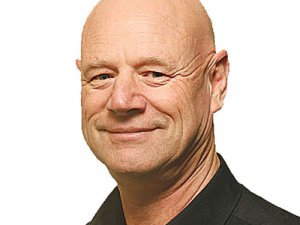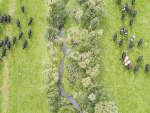Farmers’ interest in using liquid fertilisers instead of the more mainstream solid granules is hotting up, says John Barnes, general manager of Fertiliser NZ, Richmond, Nelson.
The company specialises in liquid fertilisers for spray application directly to the leaf. Foliar application means fertiliser is absorbed directly, without soil leaching losses, says Barnes.
The market is changing, he says.
“Pick up any newspaper anywhere in the country and you find somebody saying something about environmental issues. We can solve 95% of them without any problem.”
Barnes said he has 25 years experience of the liquid fertiliser industry, running Fertiliser NZ since 2004.
The company manufactures its own products, largely based on fish meal and seaweed. Some seaweed is imported but fish meal can come from “just about any port in NZ,” said Barnes.
It sells NZ-wide from the Richmond office and a branch in Southland, and is exporting to Vietnam.
Barnes said he is not “anti-solids” and the company has some solid fertiliser product. However, solid fertiliser granules go into the ground and must be turned into plant-available material before being absorbed through the roots.
“If it’s sprayed on the leaf, it’s in the leaf within minutes and the plant will be using that tomorrow to grow. So it’s a short-cut.”
Leaching equals loss, says Barnes.
“You can put on one-third of what you would normally put on the ground and get the same result. Leaching means you’re losing something and if you put it on the leaf you’re losing nothing. It goes into the leaf and it’s used by the plant. It doesn’t touch the ground so you won’t lose it.”
Fertiliser NZ has close links with spraying machine manufacturer Tow And Farm, in whose newsletter Tow and Fert Times Barnes recently wrote that pressure is growing from the public and the Government to clean up waterways.
While the public focus is on ‘dirty dairying’, the real change will come in nutrient limits, which is not just a dairying issue, Barnes wrote.
“Yes, there is cost involved, but changing from granular application of fertiliser -- nitrogen specifically -- to applying fertiliser to the leaf of the grass is the obvious thing to do.”


















